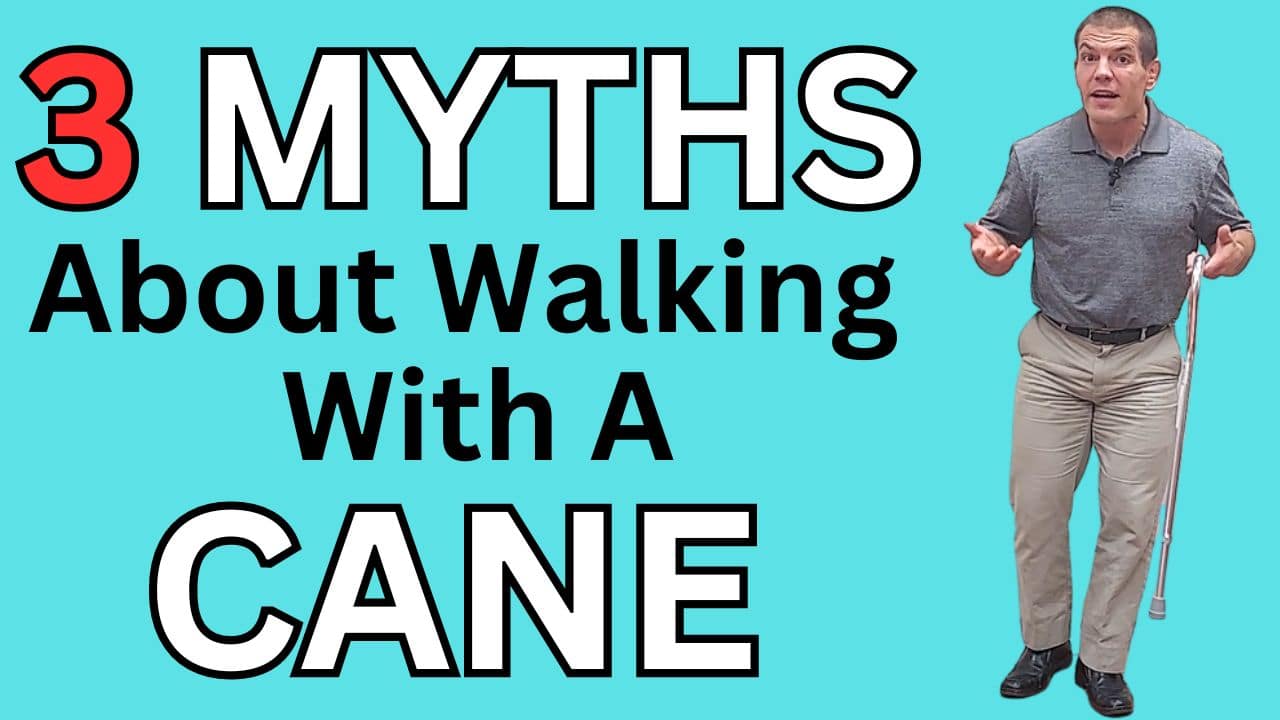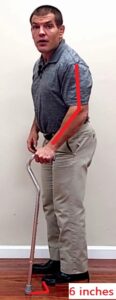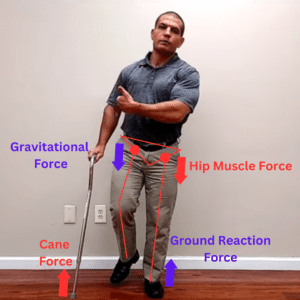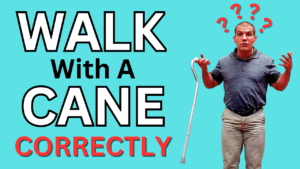Do you have severe hip or knee pain when walking?
Or do you feel less steady on your feet than you used to?
Are you fearful that you’re going to fall?
Or maybe you feel like you always need to grab on to furniture to move around the house.
If you answered yes to any of these questions, you're not alone.
Millions of older adults have the same balance and mobility concerns.
However, many seniors are hesitant to walk with a cane, even if they know they need it.
In this post, I'm going answer the question:
Is Using A Cane Bad For You?
In brief, using a cane is NOT bad for you. If you have severe pain when walking or are worried that you're going to fall, using a cane is absolutely a GOOD idea.
Now that that's cleared up, in the rest of this post, I'll debunk 3 common myths about walking with a cane so that you can better decide whether or not you should use one.
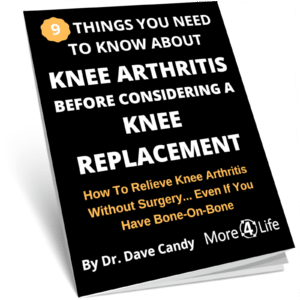
Myth 1: Walking With A Cane Makes You Look Old
This is probably the biggest mental hurdle that people have about walking with a cane.
They’re afraid that it will make them look old and their family or friends will judge them.
The harsh reality of it is:
Most people are too wrapped up in their own lives to really care if you’re using a cane or not.
What DOES make you look old is limping around because you’re in pain.
You know what also makes you look old?
If you’re laying on the ground because you’ve fallen and can't get up from the floor.
Furthermore, if someone is going to judge you for using something to help you get around better and be able to enjoy the activities that you like to do, you may want to consider whether or not that’s a person you really need in your life.
The people who really matter, your family and true friends, won't mind.
In fact, they'll probably be happy that you can come out and spend time with them rather than staying home because you’re in too much pain or afraid of falling.
The one exception to this rule is sometimes your children.
Your children may think that using a cane is bad because they genuinely care about you.
They may think that walking with a cane will make you weaker or that you'll become dependent on it.
And that brings to Myth #2.
Myth 2: Walking With A Cane Makes You Weaker
Walking with a cane does NOT make you weaker.
In fact, it does the opposite.
Walking with a cane actually makes you stronger.
It’s counterintuitive, I know… but bare with me a second.
If it hurts too much to walk or you’re afraid to walk for fear of falling, then you won’t walk as much.
And being sedentary makes you weaker.
Furthermore, even if you do push through the pain and limp around, that’s only going to make the pain worse.
Eventually, it will get to the point where you can’t push through anymore.
On top of that, your body isn’t stupid.
If using your muscles is causing them to hurt, your brain is going to inhibit them and tell them not to work.
Then you’ll have to compensate by using other stronger muscles.
But that just makes the strong muscles stronger and the weak muscles weaker.
How Walking With A Cane Makes You Stronger
By walking with a cane, it allows you to offload your weak muscles JUST ENOUGH that you can use them without pain.
And by using them on a regular basis, they get stronger.
Here’s how to walk with a cane in order to get stronger instead of weaker.
First, make sure you have the cane adjusted to the proper height.
Your cane should be roughly as high as your hip bone.
Another way to measure your cane is to make sure your elbow is bent 20-30 degrees when you’re holding the cane 6 inches in front of you and 6 inches out to the side of you.
This allows you to put some pressure through it without bending over and without having to use your arm muscles too much.
Use the cane in the opposite hand as your weak or sore leg. That allows you to offload your muscles and joints by leaning away from the sore leg.
Move the cane at the same time as the sore or weak leg. Make sure to put some pressure through the cane, again to offload the weaker leg.
Repeat this over and over while walking and it will allow you to walk longer with less pain.
And by walking longer and more often, you get stronger… NOT weaker.
DMI Sports Walking Cane and Stick for Ad...
$22.76 (as of July 26, 2024 03:25 GMT -05:00 - More infoProduct prices and availability are accurate as of the date/time indicated and are subject to change. Any price and availability information displayed on [relevant Amazon Site(s), as applicable] at the time of purchase will apply to the purchase of this product.)Myth 3: Walking With A Cane Is A Slippery Slope To Decline
Another reason that people think walking with a cane is bad is that they view it as the start of a slippery slope.
They fear that once they start using a cane, before long they’ll be using a walker, and then after that a wheelchair… until they die.
Often that fear comes from seeing a parent or loved one go through that same course of events.
But YOU are not your parents.
By using a cane properly, you can use it to get stronger and hopefully eventually get back to walking confidently without pain.
And if a cane DOES become a permanent fixture in your life, there’s no guarantee that you’re going to decline if you continue to stay active.
If you’re going to need a cane on a long-term basis, you may as well get one that fits your style.
Shop Stylish Canes on Amazon
I’ve had patients who have brought in hot pink canes, tie-dye patterned canes, or even a patient who had dogs on her can because she loves dogs.
Make it a fashion accessory and own it as part of your personality.
Remember, the only person who can really make you feel bad about using a cane is you.
If you show others that you’re not ashamed about using a cane, then they won’t think you should be either.
So hopefully you found this post informative, motivational, or both.
Need Help To Walk Better?
If you’re in the St. Louis area and need help to walk with better balance and less pain, we’d be happy to help you here at More 4 Life.
Just tap the button below to request an appointment with one of our specialist physical therapists.

